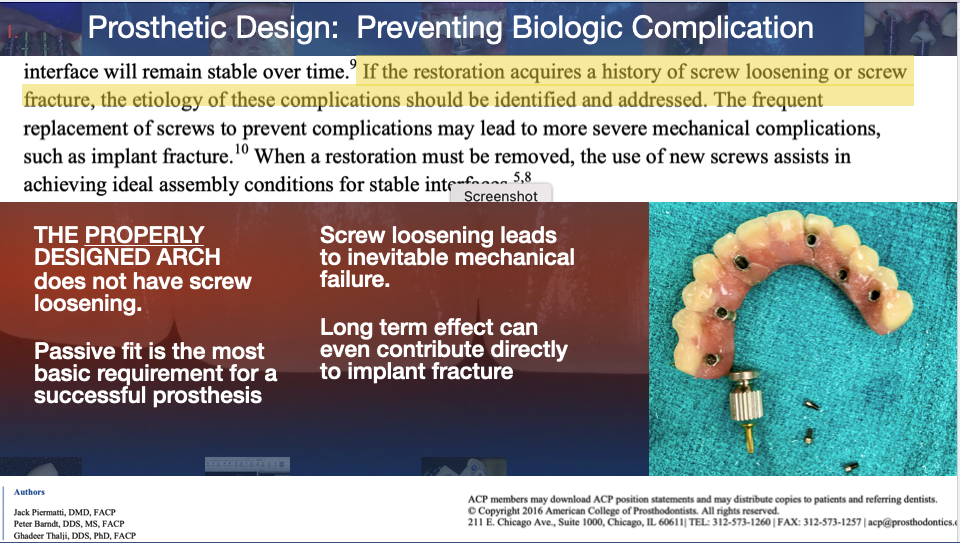All on 4 and Full Arch Maintenance Protocols
HYGIENE AND MAINTENANCE PROTOCOLS FOR FULL ARCH

FULL ARCH HYGIENE-MAINTANENCE PROTOCOL
1. Radiographic exam of fixtures-PA’s or Pano
2. Comprehensive evaluation of the soft tissues surrounding the implants for inflammation, signs such as redness, swelling, smooth vs. dimpled texture
3. Monitor probing depths, bleeding on probing, and look for suppuration where observation possible
4. Assess OHI, plaque and calculus accumulation
5. CHECK OCCLUSION and remedy changes that may lead to mechanical complications
6. Service appliance with proper curettes where need
7. Air Polish with Glycine or Erythritol Powders
RECALL GUIDELINES
Individualize per patient
Group 1: 3 Month Recall. Patients with motor function difficulties, heavy calculus, or evidence of inflammation get this designation for obvious reasons.. Prosthesis should be removed twice a year for this group and this will continue until an improvement is observed. The patient should be warned of the need for additional prosthetic screws periodically through this disease related treatment.
Group 2: 6 Month Recall Patients with moderate calculus build up located at the abutments or framework/abutment junctions can be are placed in this group. Cleanings are completed at every visit without removal of the fixed arch, but prosthesis removal SHOULD be considered at first signs of biologic issue.
Group 3: 1 Year Recall Patients that have excellent home care whose presentation at this recall interval demonstrates both adequate tissue health and hygiene of their appliance are placed in this group.
COMPONENT AND APPLIANCE Q AND A
Should a Full Arch Restoration be removed on a set recall schedule?
According to the American College of Prosthodontists, the appliance SHOULD NOT be removed annually for a maintenance check.
When should the full arch All on 4 appliance be removed?
- Evidence of Peri-mucositis
- Evidence of Peri-implantitis
- Pt inability to maintain hygiene
- Mechanical Complications
What are the two scenarios for replacement of the restorative screws on an All-On4 arch?
CONTEXT 1: Initial Fabrication/Delivery process
Exercise care to limit torquing to 15N-cm no more than 5 times. After 4-5x of torquing during fabrication the restorative screw will have undergone enough strain elongation to not perform effectively moving forward in maintaining preload in subsequent experiences
CONTEXT 2: Months/Years after delivery
Should the appliance require removal, THE SCREWS SHOULD BE REPLACED FOR REINSERTION.



